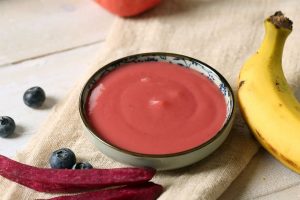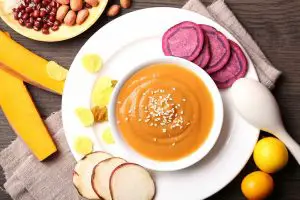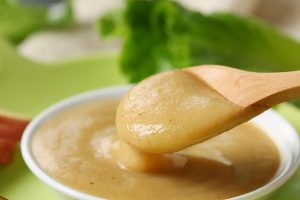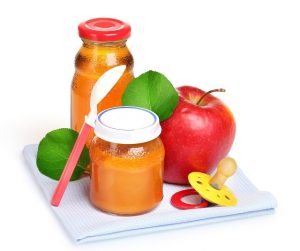Table of Contents
Food Processor vs. Blender
When making homemade baby food or making purees, the basic equipment you need is either a food processor and blender. Suppose you plan to add another piece of equipment aside from your baby formula maker.
In that case, you may choose between a blender or a baby food processor; we will give you tips and suggest methods on how to make baby foods and an overview of the most used equipment when it comes to making baby food.
However, you can also choose one that will work best for you and which machine you will be comfortable working with. Remember, it is not compulsory to buy both machines.
Food Processors
Most food processors are already made to do tons of tasks in one machine. Food processors do not only puree, mash, or grind the food. They may also steam and cook the food items you process with it. It also comes with different accessories such as blades that come in handy if you need to do other tasks, like grinding, dicing, chopping, shredding, and even kneading. The food processor can be a bit slower than blenders, but it can do other tasks.
Food processors can work well even on solid food items or bulky sliced fruits and vegetables. They can also work to grind grains to create homemade baby cereals.
Blenders
Blenders generally work best when you’re using food items that are already soft or mushy. If you plan on making smoothies, soups, and light and fine purees, then a blender will do just fine. But this might not work well with large chunks of fruits or vegetables. Blenders also are generally fast and have three to four different speed settings. This equipment is also ideal if you plan on making large batches of baby food.
How to Prepare the Ingredients
Fruits and Vegetables
Always remember to clean and wash your produce thoroughly before processing. Fruits and vegetables can be steamed, cooked, baked, or boiled before throwing them into the processor or blender. Also, remember to peel and remove seeds, especially from fruits, use organic produce if possible. Prepare liquids to be used. You may use distilled water, formula milk, or breast milk.
Grains and Cereal Flakes
Cook or toast grains before processing or grinding them. This helps you produce dry and finely powdered grains and cereals. You may use these powdered grains and cereals by adding hot water or hot milk until it becomes thick and creamy.
Meat and Poultry
Clean, wash and dice meat and poultry before processing. Protein is great to be incorporated for baby’s soups and works best with pureed or blended vegetables.
Processing and Blending
After preparing your ingredients and materials, you can now proceed to blending and pureeing yummy blends for your little one. If you want your baby’s food to be a little liquidy or smoothie-like, you can always add more liquids such as distilled water, formula milk, or breast milk. Remember that salt and sugar are not needed when making baby food.
How to Store Homemade Baby Food
The basic way to store homemade baby food is to refrigerate or freeze them.
- Purees or creamed baby food can be stored in the refrigerator for up to four days and can be stored frozen for a maximum of three months.
- Single-serving containers are suggested to be used when it comes to storing homemade baby food. This makes it easier to thaw or defrost and directly serve to your little ones. Remember to check the temperature before feeding.
- You can always use breast milk storage bags as an alternative to store homemade baby food, purees, and soups.
- Avoid feeding your babies directly from the storage bag or storage container; if it happens, you should never store them again. Saliva may cause contamination resulting in bacterial growth.
Serving Baby’s Food
- Always practice proper hand hygiene and wash your hands with soap and water before serving your baby’s food. If you happen to touch raw produce or meat between the process, always wash your hands before you resume feeding your baby.
- Ensure that you only use clean and sterilized feeding utensils. Also, make sure that your working area and countertop is clean.
- Make sure that the liquid products that you are using are pasteurized or distilled. Avoid using “raw” milk or juices to avoid bacterial infection. When using eggs, always make sure to have them well-cooked to avoid infection due to salmonella.
- Tasting can’t be avoided, so always remember to change to fresh or clean spoons in between tastings. And if you doubt the freshness or the taste of the food, don’t hesitate to throw it out and make a new batch.
Conclusion
Making baby food at home is not just a genius way to help you save a fortune. More importantly, homemade baby food also is a great way to ensure that your baby only gets the most nutritious and high-quality food. Also, if you need to, always consult your baby’s pediatrician when it comes to introducing a solid or new food into your baby’s diet.

